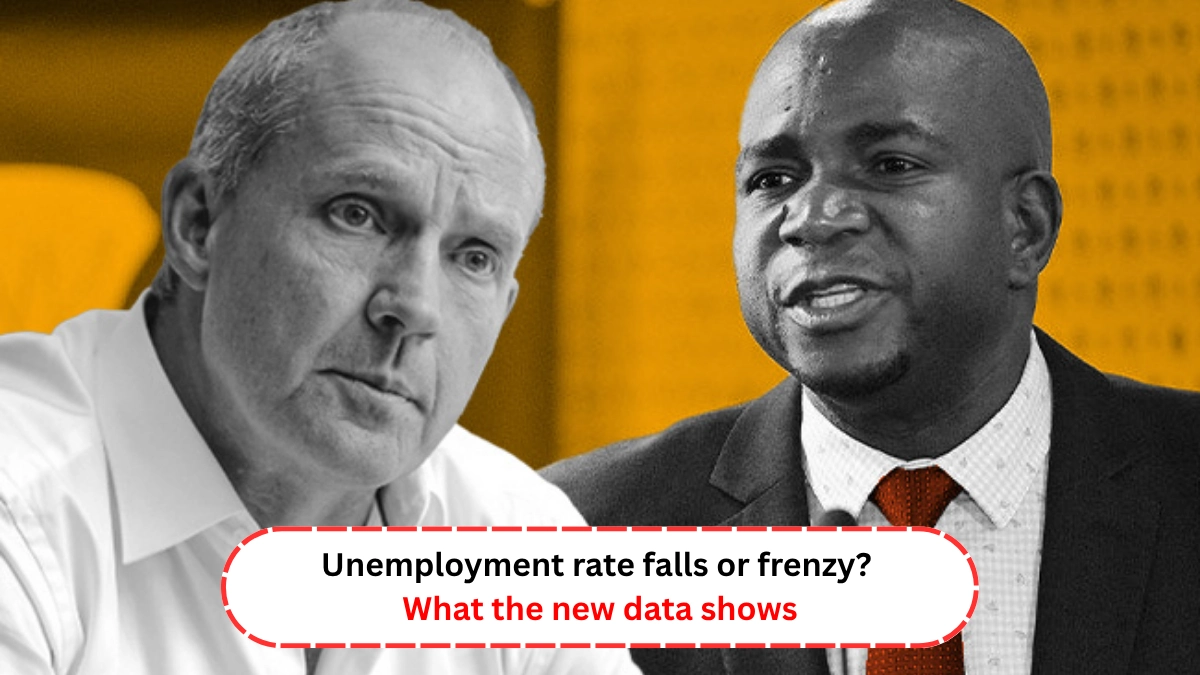Stats SA has defended its official unemployment rate after Capitec Bank CEO Gerrie Fourie claimed that the real figure may be much lower than reported. The public debate started after Fourie said South Africa’s true jobless rate might be closer to 10%, not the official 32.9%.
This statement led to a high-level meeting in Stellenbosch last week. In attendance were Minister in the Presidency Khumbudzo Ntshavheni, Statistician-General Risenga Maluleke, senior Stats SA members, and National Treasury officials. The purpose was to discuss Capitec’s concerns and explain how Stats SA collects its data.
Why Capitec Believes the Real Number is Lower
Gerrie Fourie based his claim on Capitec’s internal data, which tracks card usage and client behaviour. He said many people make money through informal work like street vending and home businesses. Fourie said they work but are not fully counted in official data.
He stressed that the informal economy is active and growing. However, he said it needs better support in the form of policy, skills development, and infrastructure. Fourie welcomed the meeting and said Capitec is willing to work with government to improve understanding of this sector.
Visit our Latest News section now for more updates.

How Stats SA Measures Unemployment
Stats SA responded by explaining how it uses the Quarterly Labour Force Survey (QLFS). This method follows International Labour Organization (ILO) standards and already includes data from informal and self-employed workers. The survey is done in households and not at workplaces, which helps capture all types of income activity.
Statistician-General Risenga Maluleke said, “We do not fix statistics to feel better about reality. We reflect that reality so the country can make evidence-based decisions.” He also confirmed that Stats SA uses both a narrow and expanded definition of unemployment. The expanded rate includes people who want work but have stopped actively searching.
Future Plans to Improve Informal Sector Data
While defending their current methods, Stats SA also admitted that data collection could improve further. Maluleke said the team is looking into creating a statistical register for small and informal businesses. This would help track more accurate information about spaza shops, informal traders, and home-run services.
The proposal received support from the National Treasury, which believes better data will lead to better support systems. Accurate records can also help design tax, funding, and training policies for the informal economy.
Joint Commitment to Better Data and Regular Updates
Both Stats SA and Capitec agreed that continued cooperation is needed. They will keep holding discussions with public and private sector groups. Minister Ntshavheni added that talks will also include other industries, such as short-term insurance.
Stats SA also announced plans to test new methods and tools in the next year. These changes aim to improve how informal work is tracked and reported. Any major updates will be shared with the public in future labour reports.
In a final statement, both Stats SA and the National Treasury confirmed their support for stronger data systems and open dialogue. The next update is expected during the release of the Q2 2025 labour statistics in August.
Related News:-
- Senzo Mchunu’s future at risk – what ANC delegates will decide
- Mzansi Express Bus Crash: Shocking New Details from Musina
- South Africans Demand Answers: Police Minister Under Fire
- Jobs at Risk? How the US Tariff on South African Exports Could Hit Your Wallet

Hi, I’m Amandeep Singh, a content writer at Ramnath Intercollage. I share updates on jobs, internships, and scholarships across South Africa using official and trusted sources. My aim is to make every post easy to read and helpful for anyone looking to apply.

